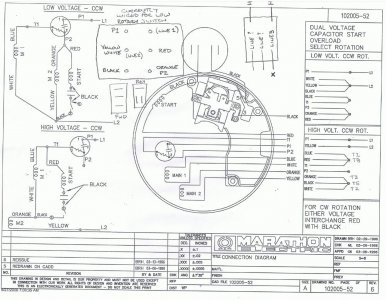- Joined
- Dec 31, 2014
- Messages
- 8
I have just taken delivery of a Logan lathe with a single phase motor wired for 110V and it is equipped with a 3 pole rotary reversing switch. I know how to wire the motor for single phase 220V operation but to use a rotary switch I need one more switched leg to handle the additional hot line coming in. I have search high and low and not found a solution. Do I need to add a 220V switch for power and leave the drum switch for forward and reverse? Thanks in advance!


